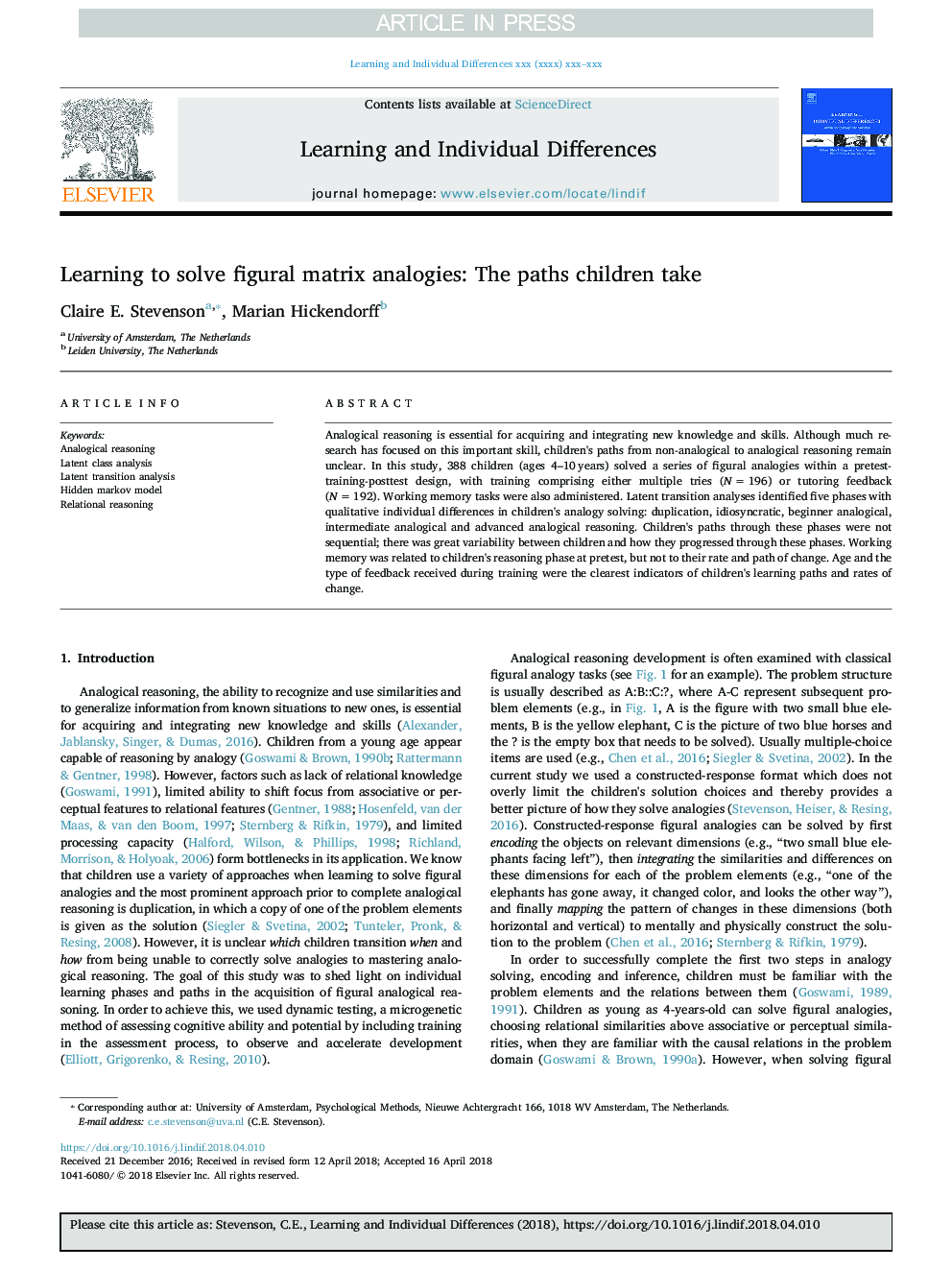| Article ID | Journal | Published Year | Pages | File Type |
|---|---|---|---|---|
| 8941751 | Learning and Individual Differences | 2018 | 13 Pages |
Abstract
Analogical reasoning is essential for acquiring and integrating new knowledge and skills. Although much research has focused on this important skill, children's paths from non-analogical to analogical reasoning remain unclear. In this study, 388 children (ages 4-10â¯years) solved a series of figural analogies within a pretest-training-posttest design, with training comprising either multiple tries (Nâ¯=â¯196) or tutoring feedback (Nâ¯=â¯192). Working memory tasks were also administered. Latent transition analyses identified five phases with qualitative individual differences in children's analogy solving: duplication, idiosyncratic, beginner analogical, intermediate analogical and advanced analogical reasoning. Children's paths through these phases were not sequential; there was great variability between children and how they progressed through these phases. Working memory was related to children's reasoning phase at pretest, but not to their rate and path of change. Age and the type of feedback received during training were the clearest indicators of children's learning paths and rates of change.
Keywords
Related Topics
Social Sciences and Humanities
Psychology
Developmental and Educational Psychology
Authors
Claire E. Stevenson, Marian Hickendorff,
